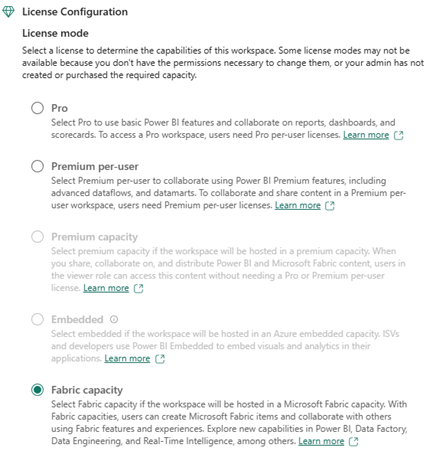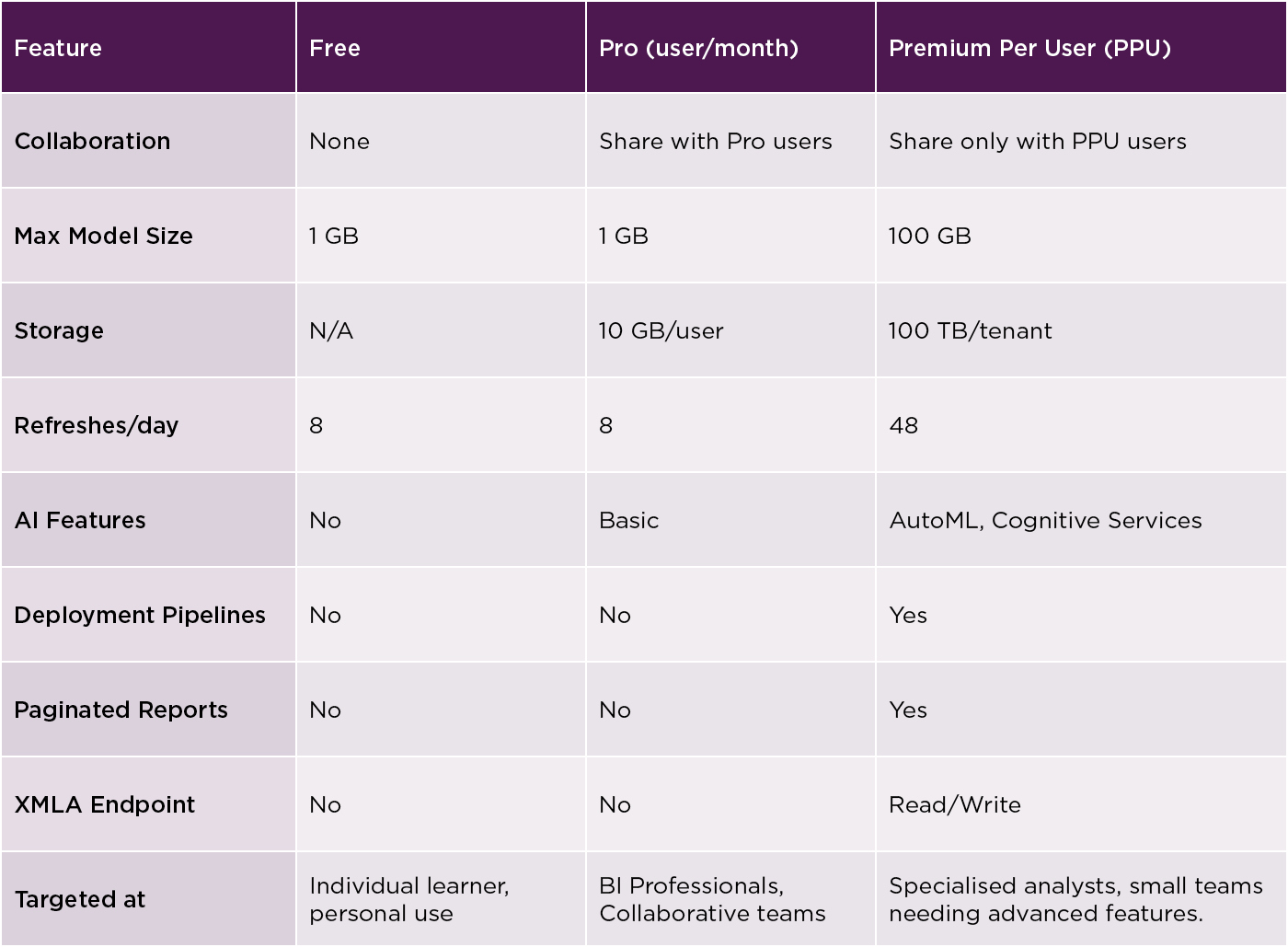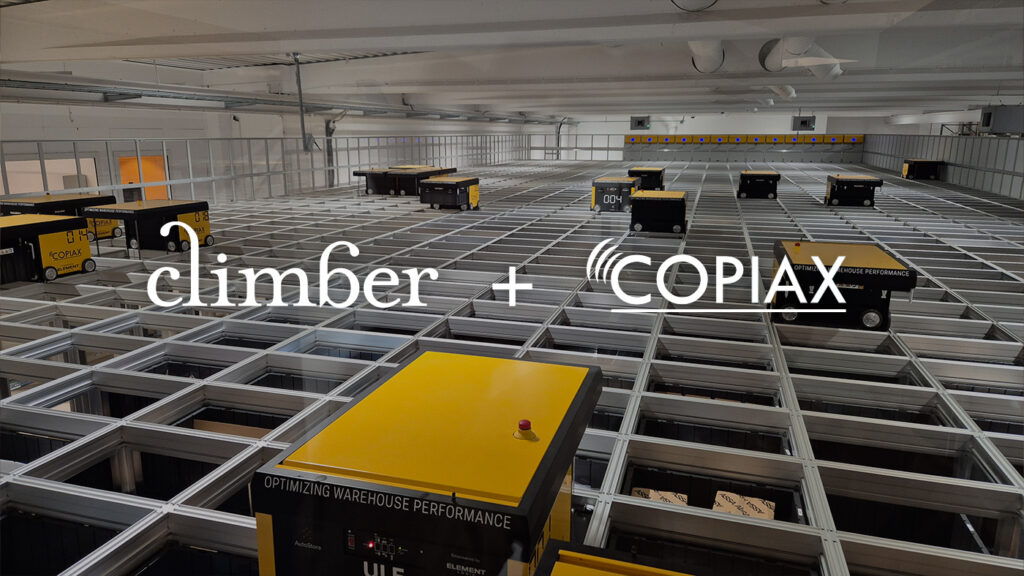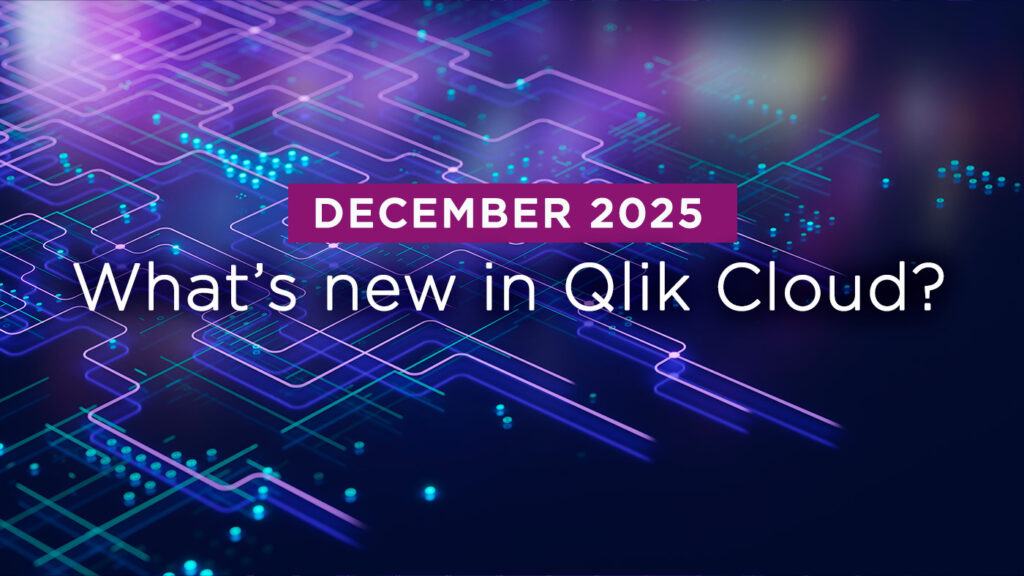
Microsoft Power BI & Microsoft Fabric Licensing in 2025: A Strategic Guide for Decision-Makers
Written by: Scott Davies, Business Intelligence Consultant at Climber.
Introduction: A Unified Data Platform
Microsoft has reimagined its analytics licensing model with the launch of Microsoft Fabric, unifying tools like Microsoft Power BI, Data Factory, Synapse, and SQL DW into a single SaaS/PaaS platform. This shift simplifies procurement and aligns with Microsoft’s cloud-first strategy. Notably, Power BI Capacity licenses have been retired, replaced by Fabric Capacity licenses. You still require Power BI user licenses for your end users.
Part 1: Per-User Licensing
It is important to remember that you will still need licenses for your Microsoft Power BI users even if you have a Microsoft Fabric Capacity license for the business.
- Power BI report designers: Power BI Pro or Premium Per User (PPU) license required always.
- Power BI report viewers: For businesses using Microsoft Fabric F32 or below, a Power BI Pro license will be needed to view objects published to a Pro or Fabric Workspace and a Premium Per User license will be needed to view objects published to a Premium Per User Workspace.
- Non-BI Fabric users: E.g., data engineers only need Fabric Free if working in a paid capacity (Fabric) workspace.

When to use PPU
If a team has advanced analytics requirements—such as needing to work with data models larger than 1GB, requiring deployment pipelines for ALM, or wanting to leverage AutoML and other advanced AI features—then Power BI Premium Per User (PPU) becomes a viable option. However, this decision must be made with full awareness that PPU users cannot share content in a PPU workspace with non-PPU users.
For organisations using a Microsoft Fabric F64 SKU or higher, Power BI Pro licenses for viewers are included, making these higher-tier SKUs especially cost-effective for businesses with many report consumers. This bundled licensing can significantly reduce the need for separate Pro licenses for viewers.
Alternatively, businesses can also obtain a Power BI Pro license through a Microsoft 365 E5 subscription, which includes it as part of the package.
Microsoft offers three Power BI user licenses

Part 2: Capacity-Based Licensing
From Power BI Premium to Microsoft Fabric
In addition to user licenses, to use Microsoft Fabric features, businesses will also need a capacity license. Power BI Premium (P-SKUs) is being phased out and has been replaced by Fabric (F-SKUs). F-SKUs offer a unified compute pool for BI, data engineering, science, and more.
Fabric Capacity Essentials
- Capacity Units (CU): A universal compute metric used across all Fabric workloads. Sold in CUs (Capacity units per second). A unit of computational resource (CPU, memory, and I/O). Range from 2 to 2048 CUs.
- F-SKUs: Range from F2 to F2048, offering granular scaling.
- Purchasing Models:
- Pay-As-You-Go: Billed per second, scalable and pausable.
- 1-Year Reservation: ~41% cheaper, ideal for predictable workloads.
- Storage: Billed separately via OneLake per GB per month.
Fabric License Considerations
When evaluating Pay-as-you-go versus a 1-Year Reservation, the reservation option stands out due to its substantial cost savings—approximately 41%. However, Pay-as-you-go provides greater flexibility, allowing services to be paused and resumed as needed. This makes it a potentially more cost-effective choice for workloads with variable or unpredictable usage patterns. You can automate these service schedules using Azure Runbooks or Fabric REST APIs to control when your Fabric service is active or idle.
It’s also important to consider how capacity is allocated across different business needs. For example, a smaller F4 capacity might be used for development and testing, while a larger F64 capacity supports production workloads. Organisations may also distribute capacity across regions or split reservations. For instance, an F16 reservation could be allocated across one F8 and two F4 subscriptions. In such a scenario, the F16 reservation would cover the usage for all the SKUs, meaning that the subscription cost would be the cost of the F16 reservation.
An example of a subscription combination for Microsoft Fabric

Purchasing Microsoft Fabric Reservation
Purchasing a Microsoft Fabric Reservation is done through the Azure portal and involves two key components:
- Reservation: This is the annual commitment to a specific number of capacity units (CUs) for your organisation. It secures discounted pricing for consistent usage over a 12-month period.
- Capacity: This refers to the specific SKU (e.g., F4, F64) you choose to run your Fabric workloads. To fully utilise your reservation, the capacity SKU you deploy should be equal to or greater than the size of your reservation.
This setup ensures you’re maximising the value of your reserved capacity and avoiding underutilisation.
Excess Usage
If usage exceeds the reserved capacity, the Fabric service will be throttled. In this situation, there are three options:
- Wait it out: Accept the throttled performance until capacity becomes available again. No additional charges apply.
- Pause and resume: Restarting the capacity triggers Pay-as-you-go billing, resulting in extra charges for the additional usage.
- Temporarily scale up: Increase the SKU temporarily and pay for the excess usage beyond the reserved capacity at Pay-as-you-go rates.
Even with a reservation in place, exceeding capacity will result in a total cost that includes both the reservation fee and any additional Pay-as-you-go charges.
CU Smoothing
Each F-SKU allows for a specified amount of CU usage, but this can be used in a variable fashion. Meaning during busy times, CU usage can exceed (or burst) above the allocated capacity and be offset against times of lower CU demand. This supports variable workloads. However, if overall limits are reached, usage may be throttled.
CU Smoothing example
A F2 capacity allows for 2 CUs or 2 CU per second. This translates into 172,800 CU per day. If a process runs for 10 minutes at 20 CUs, this will consume 24,000 of the allocated 172,800 CU. Provided the organisation uses no more than 148,800 CU for the next 24 hours, the CU smoothing will ensure they experience no throttling.
Note: Background processes run on a 24-hour CU smoothing window, whereas interactive processes run on a 10-minute smoothing window. More details are available here.
Microsoft Fabric doesn’t include storage costs
While Microsoft Fabric offers a unified platform for analytics and data services, it’s important to note that storage is not included in the cost of Fabric capacity licenses. Instead, storage is billed separately through OneLake, currently priced per GB per month. This separation allows for more flexible scaling of compute and storage resources, but it also means that organisations must carefully monitor and manage their data volumes to avoid unexpected costs.
Microsoft Power BI semantic models are not included in storage costs but instead are tied to user licenses. Power BI Pro allows up to 10GB/user, whereas PPU allows for 100TB/tenant and 100GB/model.
Part 3: Strategic Licensing Scenarios
Small Teams (<25 users)
Recommendation: Use Power BI Pro for all users. Cost-effective and collaborative.
- PPU is viable for advanced needs but creates a silo.
- Fabric Capacity is useful if data ingestion, transformation, and storage tools are required.
Mid-Sized Enterprise (e.g., 50 designers, 500 viewers)
Options:
- Pro for All (Per Month)
- F64 + 50 Pro Licenses for designers (1-Year Reservation)
Recommendation: F64 with reservation is more cost-effective and scalable.
Large Enterprises
Recommendation: Use a hybrid model.
- F128+ Capacity for shared compute.
- Pro Licenses for most designers.
- PPU Licenses for advanced teams.
- Fabric Free for viewers.
Governance is critical to manage shared resources and prevent overuse.
Embedding Analytics
Recommendation: Purchase a suitable F-SKU. All F-SKUs now include Power BI Embedded, eliminating the need for separate A-SKUs.
Note: On-premises rights (on-premises Power BI Service) are now limited to F64 or higher with 1-Year Reservation or SQL Server EE with Software Assurance.
Conclusion: Strategic Takeaways
1. Unified Platform Strategy
Microsoft Fabric consolidates Microsoft Power BI, Data Factory, Synapse, and SQL DW into a single SaaS/PaaS platform, simplifying licensing and aligning with a cloud-first approach.
2. Licensing Structure
- User Licensing: Power BI Pro, Premium Per User (PPU), and Free licenses are still required depending on user roles and workspace types.
- Capacity Licensing: Power BI Premium (P-SKUs) is being phased out in favour of Fabric Capacity (F-SKUs), which are more flexible and scalable.
3. F64+ benefits
- Included Power BI Pro licenses: For F64 and higher capacities, Power BI Pro viewer licenses are included. Developers will still need Pro or PPU licenses.
- Upgrading makes sense: Depending on user mix, upgrading to a higher capacity SKU might result in a lower overall bill.
4. Cost Optimisation
- 1-Year Reservations offer ~41% savings over Pay-as-you-go, making them ideal for predictable workloads.
- Pay-as-you-go is better suited for variable or seasonal workloads due to its flexibility and ability to pause/resume services.
5. Capacity Planning
- Businesses can mix and match F-SKUs across regions or departments.
- CU (Capacity Unit) smoothing allows for short-term bursts in usage without immediate throttling, supporting dynamic workloads.
6. Handling Overages
If usage exceeds reserved capacity, businesses can:
- Wait for capacity to free up (no extra cost),
- Pause and resume (triggers Pay-as-you-go billing),
- Temporarily scale up (incurs additional charges).
7. On-Premises Rights
Only available with F64+ (1-Year Reservation) or SQL Server EE with Software Assurance.
Optimise Microsoft Power BI & Microsoft Fabric Licensing
With Microsoft’s shift to Fabric and the retirement of Power BI Premium capacity licenses, now is the time to reassess your licensing strategy. Whether you’re a small team, a growing enterprise, or embedding analytics into your apps, the right mix of user and capacity licenses can significantly reduce costs and improve performance.
- Need help choosing between Pay-as-you-go and Reserved Capacity?
- Unsure how to license viewers, designers, or embedded solutions?
- Want to avoid overpaying or underutilising your resources?
Let us help you build a tailored, cost-effective licensing plan.
Contact Climber today for expert guidance and ensure you’re getting the best value from your Microsoft investment.
WANT TO KNOW MORE? CONTACT US!
Thomas Christian
Business Relationship Manager
thomas.christian@climber.se
+46 72 401 47 47
Jonas Grundström
Sales & Business Development Director
jonas.grundstrom@climber.se
+46 73 340 26 36
News

Så använder Sveriges största säkerhetsgrossist AI för att stärka kundrelationer
Sveriges största säkerhetsgrossist, Copiax, använder AI-driven analys för att identifiera kunder med vikande köpbeteende – och får insikterna levererade som poddar.
>> Läs mer om projektet här
Qlik Trends 2026
Join us on 14th January for the Qlik streaming event, Powering the Future of AI: Dare to Orchestrate Data, Agents, and Roles. We’ll reveal and explore the three key areas that successful enterprises must wire together to ensure integrity, connect every system seamlessly, and fuel innovation at the edge.
>> REGISTER NOW
What’s New in Qlik Cloud – December 2025
December brings a wide range of updates across Qlik Cloud Analytics, Qlik Automate, and platform administration. Qlik has also left some releases under the tree for the data integration pros.
>> Read more
